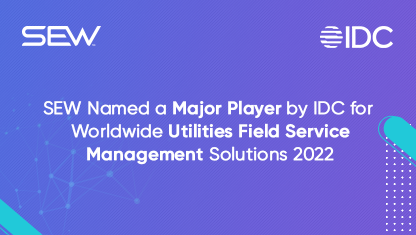
Say Goodbye to Downtime and Hello to Efficiency
How Predictive Asset Management is Reshaping Utilities
Picture this: you’re a utility company manager, and you’ve just received a call from one of your customers complaining about a power outage. You frantically scramble to figure out what went wrong and how to fix it. After hours of troubleshooting and several cups of coffee later, you discover that a faulty transformer caused the outage. You quickly send a team to replace the transformer, but the damage is already done. Your customers are unhappy, and your repair costs have skyrocketed.
Now, let’s imagine a different scenario. You receive an alert on your phone that one of your transformers is showing signs of abnormal activity, but it’s still functioning normally. You take a deep breath and calmly dispatch a maintenance crew to repair the transformer before it fails. Crisis averted, and your customers remain happy.
Welcome to the world of Predictive Asset Management in the utility industry!
According to a study by McKinsey & Co., predictive maintenance can reduce maintenance costs by 10-40% and increase asset uptime by 5-20%. This translates to significant cost savings for utilities and improved customer satisfaction.
With the rise of digital technologies and predictive analytics, utilities are moving away from a reactive approach to asset management to a proactive one. What’s driving the change? Let’s have a look:
It Starts with Data
Data is playing a critical role in improving asset performance and reliability. The increasing use of IoT sensors, machine learning algorithms, and cloud computing in the utility industry is driving the importance of data. By analyzing data from various sources, utilities can identify patterns and trends that can help them optimize maintenance schedules and improve asset performance. Using data enables utilities to prioritize maintenance efforts and allocate resources more effectively, improving efficiency and reducing environmental impacts.
Moreover, utilities are increasingly using data to analyze their entire network instead of focusing solely on individual assets. This approach enables energy and water providers to make more informed decisions about infrastructure investments and improve their systems' overall reliability and resilience.
The Power of Predictive Analytics
Predictive analytics empowers utilities to gain insights into asset performance and predict when maintenance is required. It allows service providers to identify patterns and trends in large datasets, enabling them to make data-driven decisions about when to perform maintenance and how to optimize their maintenance schedules.
Predictive analytics help utilities optimize their asset lifecycles by identifying when an asset is approaching the end of its useful life and needs to be replaced. This allows utilities to plan for capital expenditures and avoid costly emergency replacements. It also enables utilities to take corrective actions before incidents occur, improving safety and regulatory compliance.
Monitoring Utility Assets Proactively
Asset health monitoring for utilities involves using various technologies to monitor and analyze the condition of critical assets in real-time. The aim is to detect any potential faults or issues before they cause significant downtime or failure, thus enabling proactive maintenance and minimizing service disruption. Adopting predictive maintenance enables utilities to use AI and ML algorithms to forecast equipment failures and optimize maintenance schedules.
Emerging technologies, such as IoT sensors, provide real-time asset performance and health data. This information is then analyzed using data analytics tools to identify trends, anomalies, and potential issues. Overall, asset health monitoring is becoming increasingly important for utilities as they strive to ensure the reliability and efficiency of their infrastructure.
Digital Twins
For utilities, digital twins are becoming increasingly popular as a tool to improve operational efficiency, reduce downtime, and enhance overall performance. Digital twins for utilities involve the integration of IoT sensors and data analytics, enabling real-time monitoring and predictive maintenance of assets. AI-ML algorithms allow utilities to optimize asset performance and predict failures before they occur.
Additionally, cloud computing and edge computing technologies are making creating and managing digital twins easier. Advances in 3D visualization and virtual reality (VR) are creating more immersive and interactive experiences in field services and asset management. With other emerging technologies, digital twins offer utilities a powerful tool to optimize operations, reduce costs, and improve customer service.
In a world where technology is constantly evolving, predictive asset management has emerged as the superpower for the energy and water industry. With the power of AI, ML and advanced analytics, utilities can now predict equipment failures and take action before disaster strikes. It’s like having a crystal ball that lets you see into the future – except this one actually works! Plus, by optimizing equipment performance and reducing downtime, utilities can save money and pass those savings on to their customers. So, let’s embrace this technology and look forward to a more efficient and sustainable future where we never have to sit in the dark again!
SEW’s Smart Mobile Workforce (SMW®) is the #1 Digital Workforce Experience (WX) platform for energy, water and gas providers, worldwide. SMW® helps in intelligently managing the field operations to make the service experiences effortless for the end customers. From work order management to AI/ML-based schedule and dispatch, SMW® delivers real-time visibility into workforce with simple, intuitive platform experiences, improves operational efficiency and assures seamless service delivery. To learn more, reach out to us at [email protected]
Liked this blog post? See when our latest posts go live by following us on LinkedIn.






